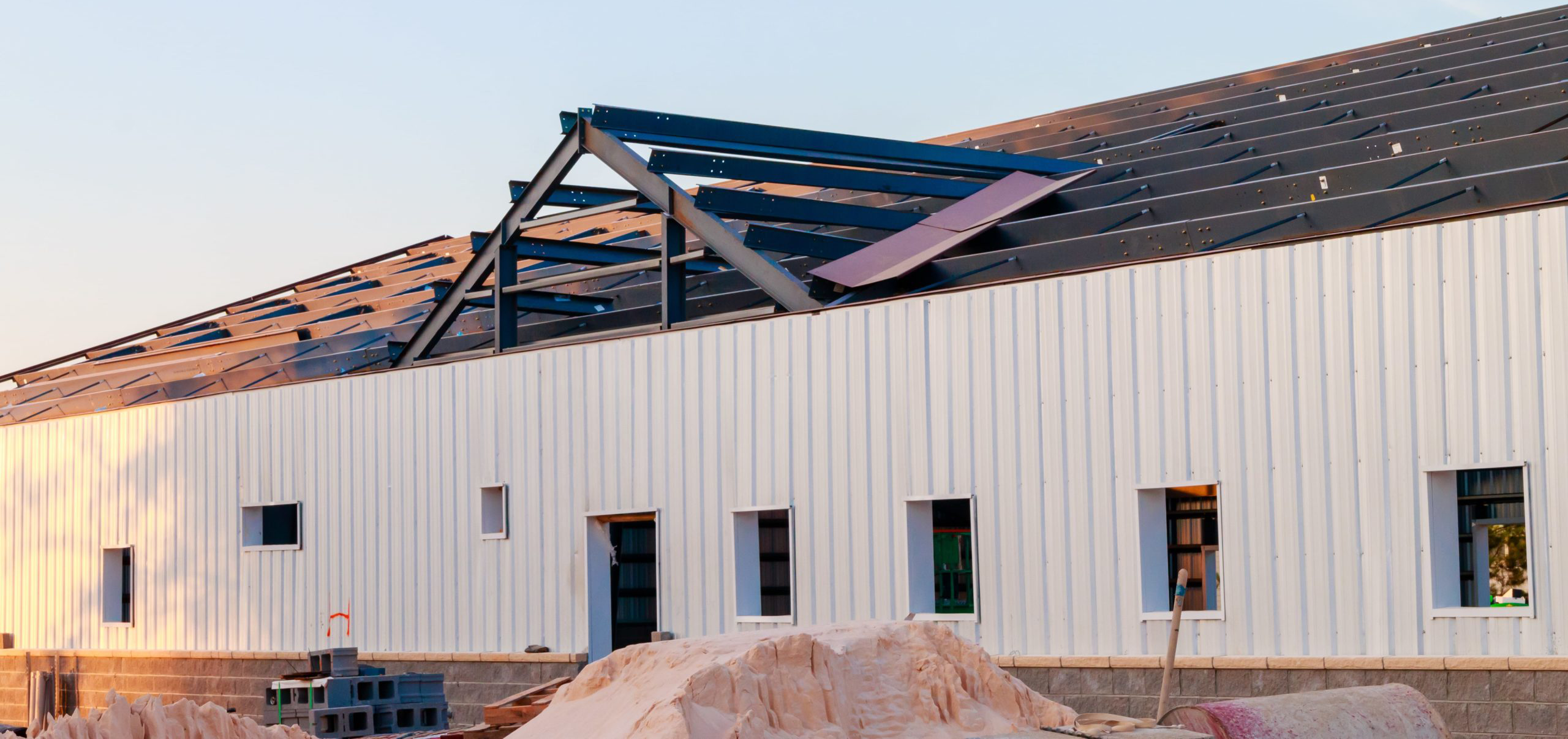
Benefits of Training Your Horses in an Indoor Arena

Training horses and riders takes patience and persistence. Anticipating each other’s moves requires lots of time in the saddle and being around each other. Poor weather and changing seasons can reduce practice time and prolong training.
However, with an indoor riding arena, training can continue uninterrupted throughout the year, day or night. A covered riding arena is a wise investment if you’re serious about training horses or developing as a rider.
What are Indoor Riding Arenas?
Indoor riding arenas, as they sound, are enclosed areas where horses can be exercised and work with riders without being exposed to the outdoor elements. The arenas can be fully enclosed or outfitted with large windows and doors to allow fresh air. These areas can also be equipped for housing horses in a paddock or stable when they’re not training.
The covered riding arenas will have sand or other flooring substrates installed, which will soften the impact on the horse’s legs and feet and help maintain moisture control. Since they’re covered or completely enclosed and climate-controlled, indoor riding areas allow horse and rider training to occur year-round.
How Easily Are Prefabricated Steel Indoor Riding Arenas Installed?
Constructing a steel indoor riding area is a relatively straightforward process. One of the more considerable challenges will occur during the initial decision-making stages, in which the style and features of the riding arena are finalized.
Designing the arena can be time-consuming, as the property owner and the builder will want to contemplate its long-term usage. Specifics about where doors and windows will be placed to increase ventilation and accessibility are critical. Additionally, the horse-holding and maintenance areas must be carefully planned to ensure functionality won’t be compromised in time.
Once the specifics of the riding arena are finalized, the building materials will be ordered. Many of these parts will arrive on the jobsite completely engineered and prefabricated for immediate installation.
While the arena is being manufactured and shipped, the arena owners will oversee the foundation’s construction. A solid foundation is important for building any prefabricated steel building, especially for a riding arena. The foundation will need to be able to drain water properly if the arena is not a completely enclosed building and has open-air sides. The foundation for a riding arena will also need to be constructed to offer protection for the horse and rider by using various substrate layers up to the top sand layer.
Once the foundation is secure, and the prefabricated arena is delivered, a construction crew will begin the building process. Since much of the building requires following instructions for joining pre-engineered parts together, the actual installation process can be as short as a week. The arena’s size and its design specifics will also play a significant role in determining the total time for construction and installation.
Benefits of Indoor Arenas in Horse Training
Training horses and riders, regardless of the type of training, requires consistency and patience. Whether the training improves barrel riding times or helps junior riders have more confidence in the saddle, the more time the horse and rider can spend together, the more effective the training will be. Let’s examine some of the benefits of an indoor training arena more profoundly.
Comfort
Both for horse and rider, staying out of the elements can make a big difference in the comfort and enjoyment they will experience during the training. By avoiding adverse weather, there can be more days in which the horses can exercise, helping them to stay in better shape than having downtime because of poor outdoor conditions.
And it’s not just cold or rainy weather which can be avoided. For example, an indoor arena can be a game-changer in states like Florida, Louisiana, or Texas, where the summer months can be sweltering.
Plus, the training times don’t have to only occur during the day with an indoor arena. Night rides can be planned to work around schedules that are too busy during the day or for conditions that are too hot or humid, in case the arena is not entirely walled in.
The arenas can also offer areas for horse maintenance and medical prep, as needed, without working in rain, sleet, or snow. Having medical facilities on-site in an enclosed arena is handy if the owners plan to hold competitions or rent space for other riders and teams to train.
Fewer Distractions
An indoor riding arena can offer complete privacy and separation from the outside world. This focus is necessary for many horses and riders to help move ahead in a training regimen. Like people, some horses can be more distracted than others, so an enclosed arena offers a unique solution.
Both horse and rider can be thrown off by environmental noises in an outside training facility, resulting in a more lengthy and sometimes difficult training process. Additionally, some horses can be quite startled by loud or sudden noises, which can be dangerous for both horse, rider, and trainer(s). Indoor arenas also allow for better control of lighting conditions, which can help reduce horse distractions.
With fewer distractions, horses can focus more on their training and develop better concentration and focus. Overall, indoor riding arenas provide a safe, quiet, and controlled environment that helps horses to concentrate on their training without being distracted by external factors.
Superior Footing
The horse and rider can also lower the chances of injury from slipping by using an indoor arena for training. Indoor arena flooring is specifically designed and engineered to give consistent flat ground and a relatively soft surface to help reduce shock and strain on a horse’s feet, ankles, and shins.
Concrete or dirt surfaces can be harsh on horses’ joints and hooves, leading to potential injuries. A well-designed indoor arena flooring can provide shock absorption and cushioning to protect horses from these hard surfaces.
In addition, superior flooring can increase the lifespan of the arena by preventing damage caused by horse traffic and heavy use and improve drainage, preventing puddles and standing water in the arena, which can cause issues like mud, erosion, and fungal growth.
Safer
Along with better footing surfaces for horses and riders, indoor arenas can also include numerous safety features in and around the riding area. Many arenas will feature padded walls or kick walls as a safety buffer. This way, riders aren’t crushed by the horse, and the horse doesn’t injure itself from a collision or get trapped foot or leg.
Improved lighting in an indoor arena also offers more safety through visibility. When seeing the upcoming ground, riders are more confident in their jumps and turns. The horse also feels more confident in seeing where they’re going and not getting spooked by shadows or strange lighting tricks.
Proper ventilation in an arena can also prove a safety factor, both in the short and long term. In the immediate future, both horse and rider want to breathe fresh, clean air and not musty, dusty air filled with mold and allergens from hay or horse dung. Giving horses in the paddocks or stables fresh air is critical for the long term, so they don’t develop respiratory problems.
With Coastal Steel Structures designs, the indoor riding arenas are also free from posts or pillars in the middle of the riding area. Using engineered beams and trusses that span the arena space’s width without additional support, horse and rider are free to work and train without any large physical impediments.
Exits and fire safety can also be extensively designed and organized to meet the needs of the arena owners. Proper door, window, and fire exit placements can make all the difference in determining how safe the arena will be in the case of an emergency.
Calmer Horses
As discussed earlier, fewer distractions can be critical for successful training results. If the horses are also housed in the arena they’re training, the familiarity of the space can also help create a calm and friendly space for them. Even giving horses a warm and dry place to train can make a substantial difference in the attitude of the animals.
Built to Last
When customers begin to weigh the advantages of prefabricated steel structures against other building materials, they quickly recognize the benefits, many of which we discussed today. Another aspect that should be mentioned is their overall durability and longevity. Steel is highly durable, rust and corrosion-resistant, and can be painted or coated further to resist the effects of the elements and time.At Coastal Steel Structures, we pride ourselves on offering the best quality buildings designed to meet each customer’s needs. Whether desiging a luxury indoor riding arena or simply looking for a durable and multi-functional storage option, contact our dedicated team of professionals today!
LETS WORK TOGETHER ON YOUR DREAMS!
Are you ready to start your steel building journey? Request a quote today and speak to one of our experienced team members to set you up for success and make your vision a reality!
GET A QUOTE